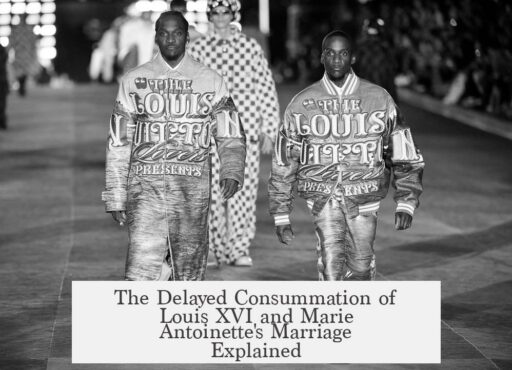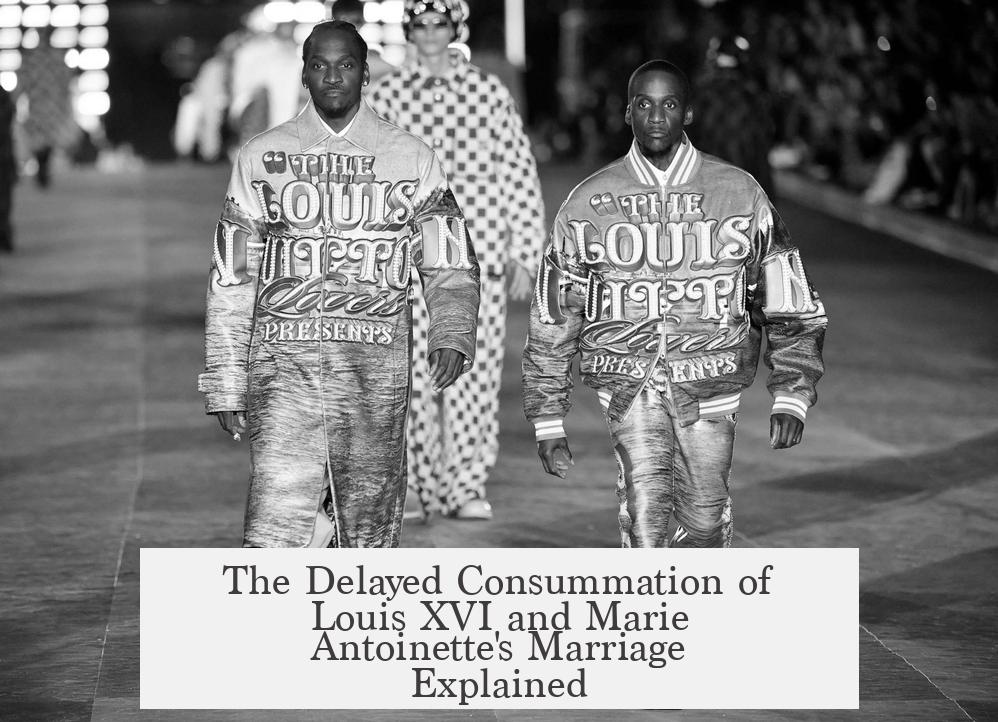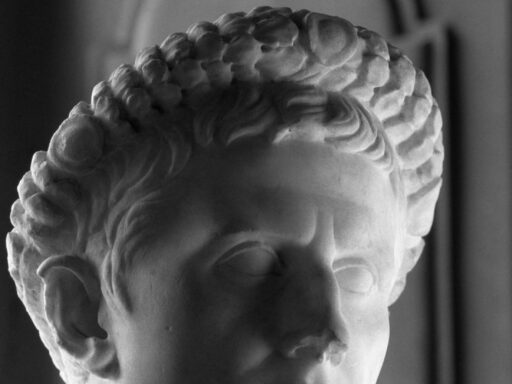Louis XVI and Marie Antoinette took an unusually long time to consummate their marriage due to a mix of youth, inexperience, medical issues, psychological factors, and social pressures. Their union began with limited mutual attraction, compounded by a lack of sexual knowledge. This inexperience led to awkwardness and difficulty in intimacy.
One key reason lies in Louis XVI’s likely medical condition called phimosis. This condition, where the foreskin cannot be fully retracted, causes pain during sexual arousal. Despite simple surgical remedies available at the time, he feared the operation. Only after several years, under significant pressure, did he undergo surgery, which helped enable consummation.
Joseph, Marie Antoinette’s brother, detailed Louis’ struggles in a letter. He described Louis’ sexual technique as undeveloped and mechanical, with short, inactive intercourse and an apparent lack of desire. Louis reportedly engaged in intercourse out of duty rather than passion. Marie Antoinette’s temperament, less suited to this challenge, contributed to their ineptness as a couple.
Additional pressure arose from the imperative to produce an heir. The royal couple’s delay invited gossip, damaged Louis’ reputation, and seeded rumors about his sexual orientation or capability. Louise XVI’s locksmith hobby became the basis for jokes about his sexual difficulties, a crude metaphor for his struggles.
These factors combined to slow the consummation of their marriage, impacting their public image and personal relationship until finally, following surgery and time, they had a child.
- Louis XVI’s phimosis caused painful intercourse and delayed consummation.
- Youth and lack of sexual knowledge led to awkwardness.
- Psychological and emotional challenges affected Louis’ sexual function.
- Enormous pressure to produce an heir intensified stress and rumors.
- The delay harmed their reputation and fueled court gossip.
Why Did It Take So Long for Louis XVI and Marie Antoinette to Consummate Their Marriage?

Simply put, it took a long time because of youth, inexperience, a medical condition, and a hefty dose of awkwardness — plus a royal spotlight that made the whole affair more complicated than just “finding the right moment.” Let’s unwrap this historical mystery layer by layer.
Marie Antoinette and Louis XVI tied the knot quite young. Here’s the catch: they were teenagers — not exactly seasoned in adult matters.
Marrying too young and lacking mutual attraction played a huge part. Imagine waking up next to someone you barely know and are not particularly drawn to, then being expected to dive into the deepest form of intimacy. The *awkward*, right?
A Royal Education in Sexual Ignorance
Turns out, the royal couple shared a significant problem: a lack of knowledge about sex. In the 18th century, sex education was not a thing, especially for royalty raised in highly controlled, formal environments. They barely understood the basics, let alone the emotional and physical intricacies of intimacy.
Think about it—if you don’t know how the dance goes, stepping on toes becomes inevitable.
The Medical Mystery: Louis XVI and Phimosis
Here’s a juicy medical tidbit: historians widely believe Louis XVI suffered from phimosis, a condition where the foreskin can’t fully retract. This mattered because it made sexual activity painful and complicated.
Now, you’d think a king could just order the best surgeon for a straightforward fix. Well, he was “deathly afraid of going under the knife,” which delayed a simple surgery that could have eased the issue.
This fear wasn’t just superficial; it directly affected his confidence and performance in the bedroom, making consummation a source of anxiety rather than pleasure.
A Telling Letter: Louis XVI’s Bedroom Blunders
Joseph II, Marie Antoinette’s brother, wrote candidly about his observations. He noted that Louis had the physical capability — “strong erections” — but a serious lack of technique and desire:
“He inserts, stays still for two minutes without moving, then withdraws without ejaculation, saying he does it only out of duty. Sometimes nocturnal emissions occur, but while lying motionless. It’s incomprehensible.”
Ouch. That’s like showing up at a party with all the right gear but forgetting all the dance moves.
Joseph also lamented Marie Antoinette’s temperament, implying she wasn’t suited to ignite the spark that Louis needed. Together, he called them “an utterly inept couple.”
This paints a vivid picture of two young people fumbling through their marital bed like shipwrecked sailors without a map.
Pressure Builds: The Race for an Heir

Of course, in a monarchy, the stakes are enormous. Producing an heir isn’t just a personal milestone; it’s a political necessity.
Louis XVI faced immense pressure to father the future king. The court buzzed with rumors and jokes about his “inability,” including playful though cruel innuendos linking his locksmith hobby to sexual difficulties — “having trouble putting the key in the right hole.” Talk about a royal burn!
Despite these challenges, Louis eventually fathered children, but the delay damaged his reputation irreparably. People questioned his masculinity and fitness to rule, showing how personal struggles can spiral into public scandals.
Lessons from the Royal Bedroom
This story might seem like a distant royal drama, but it highlights universal themes. Young couples can face bewildering challenges when intimacy collides with inexperience, fear, and pressure.
What if Louis and Marie had access to open conversations about sex? Or a trusted guide? Would it have made a difference?
Medical conditions can turn something joyful into something painful. Louis’s fear of surgery delayed relief, showing how psychological barriers sometimes loom larger than physical ones.
On a lighter note, even kings are not immune to awkwardness. Sexual performance is part biology, part psychology, and part practice — and no ruler, no matter how powerful, is exempt.
Recommendations for Modern Readers
- Communicate Early and Often: Louis and Marie’s story suggests that silence magnifies problems. Today, couples can benefit enormously from honest talks about expectations and concerns.
- Seek Help Without Delay: Don’t let fear stop you from addressing health issues. Louis’s hesitation sidelined intimacy for years.
- Don’t Buy Into Performance Pressure: The pressure Louis felt resonates even now. Every relationship is different, and there’s no single timeline or “performance” blueprint.
Lastly, let’s remember to chuckle a bit. A king struggling with “which hole to put the key in” serves a royal reminder that no one is perfect. Even history’s grandest figures face challenges that can seem surprisingly human.
So, why did it take so long for Louis XVI and Marie Antoinette? Because youth, ignorance, fear, medical mystery, and royal pressure turned marriage into a slow, awkward waltz. A story less about betrayal or scandal and more about human frailty cloaked in regal robes.




